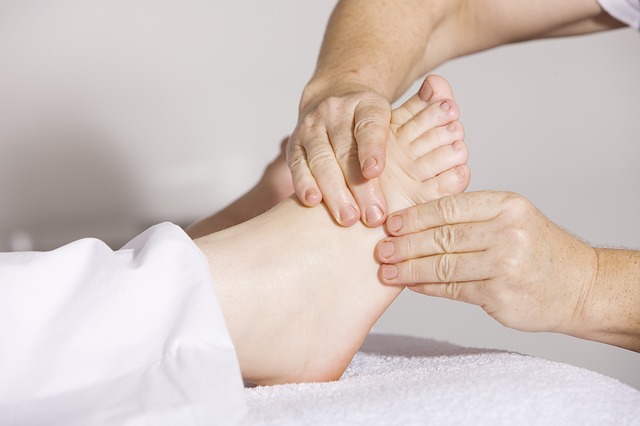
by Bianca Garilli, ND
Diabetic peripheral neuropathy (DPN), a common complication of diabetes, leads to pain and loss of feeling in the hands, arms, feet and legs. The incidence of neuropathy is approximately 45% for patients with type 2 diabetes mellitus (T2D) and is responsible for more hospital admissions than all other diabetic complications combined; as well as accounting for 50-75% of non-traumatic amputations.1-2 The most common pharmaceutical treatments utilized in DPN cases include analgesics and anti-depressants along with physical therapy, electrical stimulation (TENS therapy) and surgery.3
More recently, lifestyle modifications including nutrition and exercise have been recommended as an early intervention for patients with DPN. The Look AHEAD (Action for Health in Diabetes) study results published in Diabetologia in 2017 took a closer look at this approach by evaluating the effects of a long-term intensive lifestyle intervention (ILI) program on DPN through long term weight loss.4
The study enrolled 5,145 overweight or obese people previously diagnosed with T2D.4 The participants, aged 45-76, were randomized to the ILI or the control group. The control group was given diabetes support and education only. Patients were followed for up to 11 years in both groups. Evaluations for peripheral neuropathy were performed using the validated Michigan Neuropathy Scoring Instrument (MNSI) questionnaire and the MNSI physical examination and light touch sensation testing. The MNSI is used to assess for presence of DPN in an out-patient setting and consists of two sections. The first is the questionnaire containing 15 self-administered questions including sensation in the areas of pain, numbness and temperature sensitivity. The second part includes a physical exam completed by a health care professional involving inspection of the DPN affected regions, vibration sensation at the dorsum of the great toe, ankle reflex grading and a monofilament test.5-6
MSNI questionnaires were completed at baseline and annually thereafter. It was found that after one year, when weight loss was maximal in the ILI group, the questionnaire scores had dropped from 1.9 to 1.7 in this group.4 This drop indicated a reduction in symptoms while the control group’s score rose from 1.8 to 2.0 indicating an increase in symptoms.4 Over the remaining years, the ILI group’s scores remained significantly lower when compared to the control group.4 Interestingly, the MNSI physical examination testing did not show a significant difference between the two groups. Researchers also noted changes in DPN scores which linked to decreased hemoglobin A1C and lipids in both groups.
It is well established that weight loss in overweight and obese adults results in lowered risk factors, reduced progression of cardiovascular disease (CVD) and other chronic illnesses. This study indicates that weight loss is a further benefit to those already diagnosed with T2D by reducing symptom severity of DPN.4
Why is this Clinically Relevant?
- Implementing an ILI in overweight and obese patients with T2D can reduce severity of DPN symptoms as measured by validated MNSI questionnaire.
- Implementing an ILI in overweight and obese patients with T2D improves weight loss.
- Lowered DPN scores were associated with reductions in HbA1c and lipid levels
- Weight loss from ILI in overweight and obese patients with T2D can lead to reduce risk of CV disease and other obesity related chronic illnesses.
Reference
- Sobhani S et al. Prevalence of diabetic peripheral neuropathy in Iran: a systematic review and meta-analysis. Journal of Diabetes & Metabolic Disorders. 2014;13:97.
- Russell J, et al. Diabetic Neuropathics. Continuum (Minneap Minn). 2014 Oct; 20(5 Peripheral Nervous System Disorders): 1226–1240.
- Mayo Clinic; Peripheral Neuropathy Treatments. http://www.mayoclinic.org/diseases-conditions/peripheral-neuropathy/diagnosis-treatment/treatment/txc-20205118. Accessed May 5, 2017.
- Look AHEAD Research Group. Effects of a long-term lifestyle modification programme on peripheral neuropathy in overweight or obese adults with type 2 diabetes: the Look AHEAD study. Diabetologia. 2017;60(6):980-988.
- Brown MB, et al. Michigan Neuropathy Screening Instrument (MNSI). eProvide. https://eprovide.mapi-trust.org/instruments/michigan-neuropathy-screening-instrument. Accessed May 5, 2017.
- Yang Z, et al. Scoring systems to screen for diabetic peripheral neuropathy. Cochrane Database of Systematic Reviews. 2014;3:CD010974.



